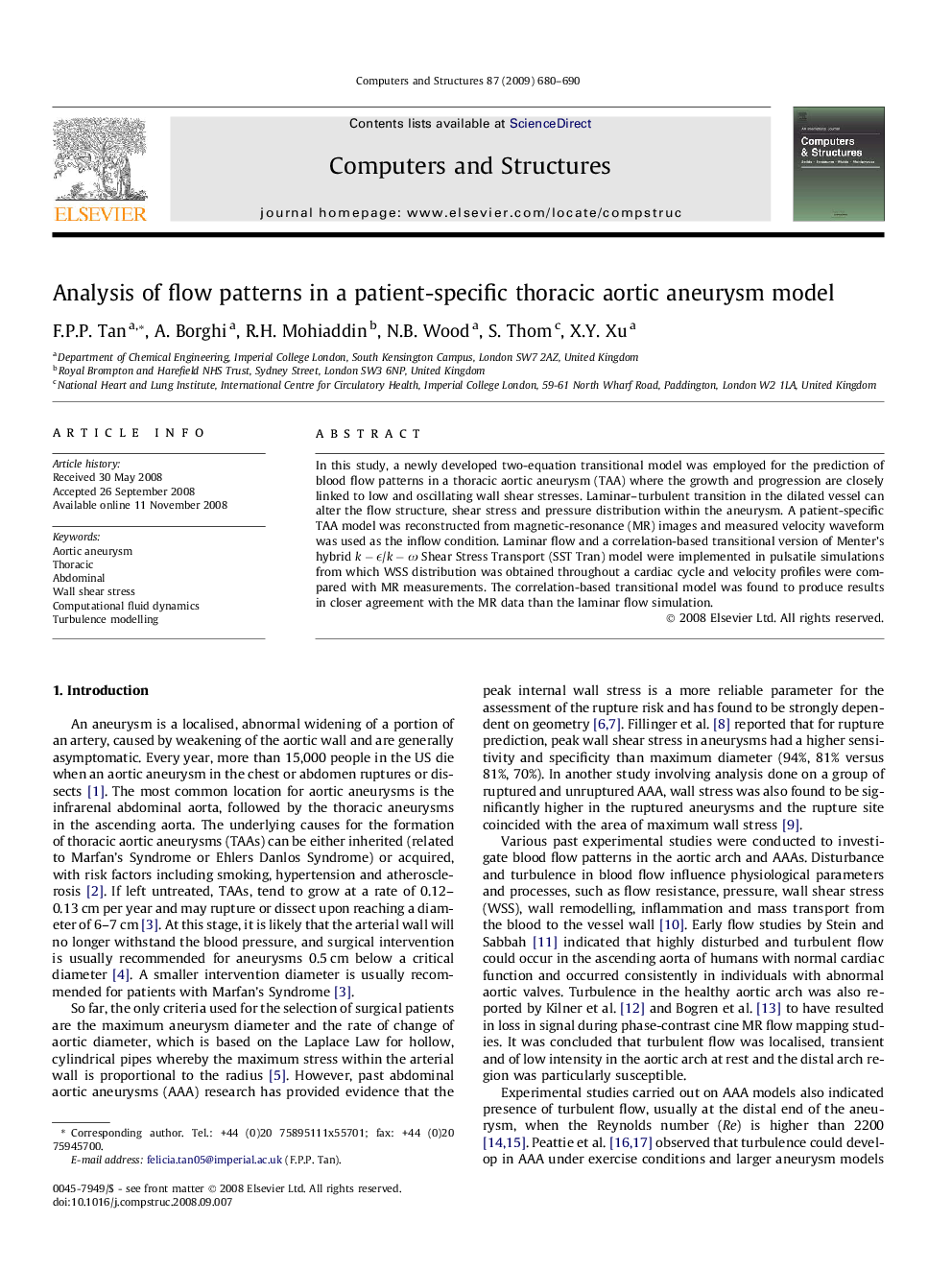| Article ID | Journal | Published Year | Pages | File Type |
|---|---|---|---|---|
| 510797 | Computers & Structures | 2009 | 11 Pages |
In this study, a newly developed two-equation transitional model was employed for the prediction of blood flow patterns in a thoracic aortic aneurysm (TAA) where the growth and progression are closely linked to low and oscillating wall shear stresses. Laminar–turbulent transition in the dilated vessel can alter the flow structure, shear stress and pressure distribution within the aneurysm. A patient-specific TAA model was reconstructed from magnetic-resonance (MR) images and measured velocity waveform was used as the inflow condition. Laminar flow and a correlation-based transitional version of Menter’s hybrid k − ϵ/k − ω Shear Stress Transport (SST Tran) model were implemented in pulsatile simulations from which WSS distribution was obtained throughout a cardiac cycle and velocity profiles were compared with MR measurements. The correlation-based transitional model was found to produce results in closer agreement with the MR data than the laminar flow simulation.
